Leh Ladakh tour package guide: must see places & must do experiences
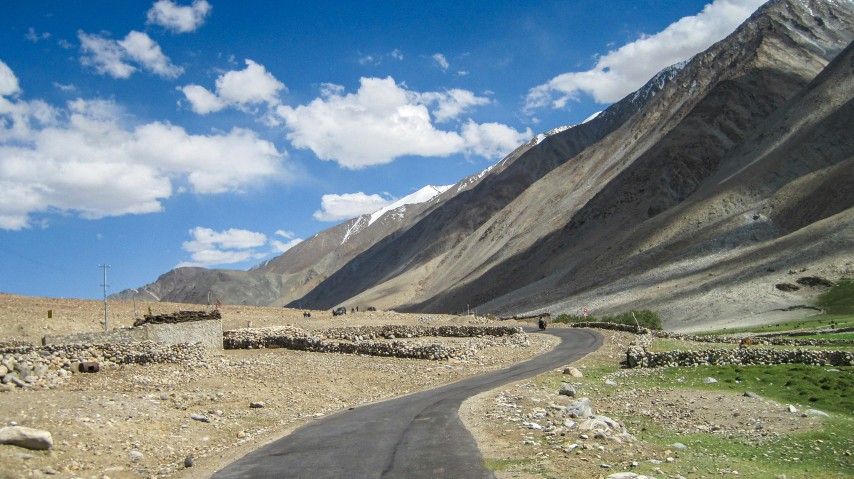
Imagine this: You’re standing by a shimmering blue lake at 14,000 feet, snow-capped peaks all around, prayer flags fluttering in the breeze, and not a single honk or email in sight. That’s Ladakh for you. If this high-altitude dream has been on your bucket list for a while, it’s time to stop scrolling and start planning. Whether you’re chasing roads less traveled, dreaming of a romantic getaway, or plotting the ultimate road trip with friends, this guide to the perfect Leh Ladakh trip package has you covered. Let’s break it down: what to see, what to do, and what to book to make this trip unforgettable. Places That Belong on Your Ladakh Hitlist Leh Town Why Visit: This is the heart of Ladakh—a high-altitude town surrounded by the Himalayas. It’s where culture, history, and comfort meet. Attractions: Shanti Stupa, Leh Palace, Namgyal Tsemo Monastery, vibrant local bazaars, and Tibetan cafés. Pro Tip: Spend at least 2 days in Leh to acclimatize before heading to higher-altitude regions. Nubra Valley Why Visit: A high-altitude desert nestled between mountains, known for sand dunes and double-humped camels. Attractions: Diskit Monastery, Hunder Sand Dunes, Turtuk Village (a cultural gem near the Indo-Pak border). Pro Tip: Visit Turtuk for a unique cultural experience, and stay in a Nubra homestay for a local touch. Pangong Lake Why Visit: India’s most iconic high-altitude lake, famous for its surreal blue shades. Attractions: Camping by the lake, sunrise photography, and stargazing. Pro Tip: There’s no mobile network here—download offline maps and carry power backups. Tso Moriri Why Visit: A more peaceful and less touristy alternative to Pangong is Tso Moriri, ideal for meditation and nature lovers. Attractions: Bird watching, Karzok village, and raw natural beauty. Pro Tip: Visit this last on your itinerary, as it’s one of the highest points and requires full acclimatization. Magnetic Hill & Gurudwara Pathar Sahib Why Visit: A quirky stop where vehicles appear to roll uphill. The Gurudwara offers peace and hot tea. Attractions: Magnetic illusion, confluence of Zanskar & Indus rivers. Pro Tip: Combine this with Alchi Monastery or Lamayuru on a short half-day trip from Leh. Hemis & Thiksey Monasteries Why Visit: These monasteries showcase Ladakh’s rich spiritual life, architecture, and Himalayan rituals. Attractions: Giant Maitreya Buddha at Thiksey, Hemis Festival (if visiting in June/July), morning chants. Pro Tip: Visit Thiksey at sunrise for incredible light and fewer tourists. Must-Do Experiences That Make It All Worth It Road Tripping on the World’s Highest Highways Trust us—nothing compares to riding through Ladakh with the wind in your hair and the majestic Himalayas unfolding before you. Whether you’re traveling solo or with a group, this is one adventure that absolutely deserves a spot on your bucket list. Stargazing Like Never Before In Ladakh, the stars don’t twinkle; they dazzle. Pangong, Hanle, and Tso Moriri offer skies so clear, you’ll forget the city even exists. Monastery Mornings Wake up early, sip butter tea, and watch monks chant in candlelight. It’s peace you can feel. Camp By the Lake A blanket of stars, a hot cup of Maggi, and the gentle sound of waves while camping by Pangong or Tso Moriri are the stuff dreams are made of. Acclimatization & Altitude Sickness: What to Know Stay 48 hours in Leh before heading to higher altitudes. Hydrate constantly—3–4 liters per day. Avoid alcohol and heavy meals the first few days. Watch for AMS symptoms like dizziness and nausea. Carry Diamox (after consulting a doctor) or use oxygen cylinders if needed. Packing Essentials for Ladakh Thermal wear, fleece layers, and down jackets Sunglasses, SPF 50+ sunscreen, lip balm Sturdy trekking shoes Reusable water bottle, energy bars Power bank and offline maps Copies of permits and ID proofs What Should Your Leh Ladakh Package Really Include? Let’s be honest: booking a trip to Ladakh isn’t just about ticking boxes; it’s about making sure you’re comfortable, safe, and actually enjoying every moment. Here’s what to look for before you hit that Book Now button: A Good Place to Crash After a long day of road tripping and sightseeing, you’ll want a cozy bed, not a sleeping bag in the cold. Look for clean, comfy hotels in Leh and lakeside camps in Nubra or Pangong with proper bedding and warm food. Reliable Wheels Ladakh’s roads can get rough (we’re talking mountain passes and hairpin bends), so SUVs like a Scorpio or Innova are the way to go. Bonus points if the driver’s a local; they know the terrain like the back of their hand. Meals Sorted Most good packages include breakfast and dinner, and trust us, you’ll want that sorted when you’re at 14,000 feet and the nearest café is 50 km away. Plus, who doesn’t love hot Maggi or butter tea after a long drive? Oxygen on Standby The altitude can sneak up on you, especially in the first couple of days. Packages that include oxygen support or emergency protocols are always a smart pick. Better safe than breathless. A Bit of Wiggle Room The best kind of travel? The kind that doesn’t feel rushed. Go for a customizable itinerary, one that lets you explore at your pace, maybe squeeze in a monastery you just heard about, or stay an extra night by the lake. Leh Ladakh Itinerary: 7-Day Travel Plan Day 1: Arrive in Leh, rest, and light exploration (Shanti Stupa, market) Day 2: Leh sightseeing—Hall of Fame, Leh Palace, monasteries Day 3: Drive to Nubra via Khardung La, explore Diskit & Hunder Day 4: Visit Turtuk or enjoy sand dunes & monastery visit Day 5: Drive to Pangong Lake via Shyok route, overnight camp Day 6: Return to Leh via Chang La; stop at Hemis Monastery Day 7: Local shopping or visit Magnetic Hill & Pathar Sahib before departure FAQs About Leh Ladakh 2025 1. Do I need any permits to visit Leh Ladakh in 2025? Yes, Inner Line Permits (ILPs) are required for Indian citizens and Protected Area Permits (PAPs) for foreign nationals. These are needed for areas like
Malaysia Trip Planner: Perfect 7-Day Travel Itinerary
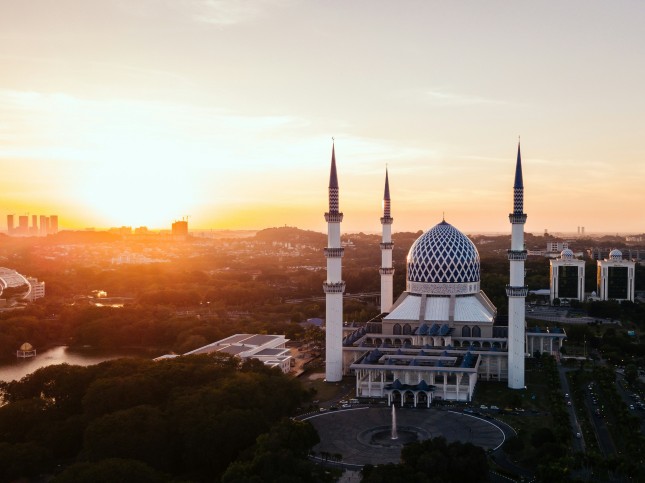
Planning the perfect week in Malaysia can feel overwhelming—so many islands, cities, and cultures to choose from! As your Malaysia trip planner and Malaysia travel planner, this post lays out a balanced, exciting Malaysia travel itinerary that combines city life, rainforest adventure, island-hopping, and even a hint of romance. Think of it as your one-stop Malaysia holiday guide, your ideal Malaysia vacation guide, and the only travel guide to Malaysia you’ll need. Day 1: Kuala Lumpur—The Heartbeat of Malaysia Morning Arrive at KLIA and take the KL Express into the city. Drop bags at your hotel in Bukit Bintang or KLCC. Afternoon Head to the Petronas Twin Towers. Book your tickets in advance via your Malaysia trip guide app or through a trusted travel agency in Malaysia. Stroll KLCC Park, then explore Suria KLCC mall’s food court for local favorites like nasi lemak. Evening Join a free walking tour (check with your Malaysia tour guide for schedules) through Chinatown’s vibrant streets. Don’t miss the street-food stalls on Jalan Alor. Pro Tip: For the best Twin Towers photo, head to the small garden just across the street around golden hour—less crowd, perfect lighting! Day 2: Cultural Immersion in Kuala Lumpur Morning Visit Batu Caves. Climb the 272 steps to the Hindu temple and snap photos of the golden Murugan statue. Stop by the nearby National Zoo if time allows. Afternoon Head to the Islamic Arts Museum Malaysia, then wander the elevated KL Forest Eco Park canopy walk. Late lunch in Kampung Baru for authentic Malay cuisine. Evening Dine at a rooftop bar in Bukit Bintang. Perfect for couples looking for a romantic getaway, Malaysia-style, sip a cocktail under the city lights. Pro Tip: Wear breathable clothes and start your visit to Batu Caves early in the morning to avoid heat and large crowds. Day 3: Taman Negara National Park—Jungle Adventure Morning Early bus or private transfer (book via your Malaysia travel planner) to Taman Negara. Check in at a riverside lodge. Afternoon Guided canopy walk and jungle trek. Your Malaysia trip planner should arrange a licensed park guide to point out exotic flora and fauna. Evening Night safari by boat. Spot glowing fireflies and nocturnal wildlife. Pro Tip: Bring insect repellent and a waterproof daypack, and wear moisture-wicking clothes for maximum comfort in the humid jungle. Day 4: From the Rainforest to the Beaches of Penang Morning Return to Kuala Lumpur and catch a short flight or express bus to George Town, Penang. Afternoon Drop luggage at a heritage boutique hotel. Explore the street-art alleys. Download a Malaysia trip itinerary map from your Malaysia vacation guide resource. Evening Sample Penang’s famous hawker fare at Gurney Drive. Char kway teow and assam laksa are must-tries! Pro Tip: Visit Armenian Street for the best murals, and rent a bicycle to explore the old town more efficiently. Day 5: George Town & Penang Hill Morning Heritage walking tour led by a local Malaysian tour guide. Visit the Khoo Kongsi clan house, the Cheong Fatt Tze (“Blue”) Mansion, and the Clan Jetties. Afternoon Funicular ride up Penang Hill for panoramic views. Late lunch at David Brown’s on the Hill (book in advance through your travel agency in Malaysia if needed). Evening Sunset beach stroll at Batu Ferringhi. Perfect moment for a romantic getaway Malaysia-style picnic as the sun dips below the horizon. Pro Tip: Bring cash for local street vendors, and consider trying a foot massage near the Batu Ferringhi Night Market. Day 6: Island-Hop to Langkawi Morning Early ferry to Langkawi. Check schedules via your Malaysia trip guide or ask your Malaysia travel guide service to arrange tickets. Check in at a beachfront resort. Afternoon Cable car and Sky Bridge excursions soar above the jungle canopy. Visit Telaga Tujuh Waterfalls (Seven Wells). Evening Dinner at Pantai Cenang, followed by night markets for souvenirs—perfect for ending your day on a relaxed note. Pro Tip: Buy Langkawi’s famous duty-free chocolates and alcohol here—it’s much cheaper than on the mainland! Day 7: Paddleboarding Departure Morning Sunrise paddleboarding or a yoga session on Pantai Tengah beach. Brunch at a beachfront café and enjoy fresh seafood and tropical fruit smoothies. Afternoon Last-minute duty-free shopping at Kuah Town. Transfer to Langkawi Airport or return ferry to Kuala Lumpur, depending on your onward flight. Pro Tip: Book a late afternoon flight if possible—you won’t want to rush through Langkawi’s easygoing farewell. Tips to Make the Most of Your Week in Malaysia Make It Yours This itinerary’s a great starting point, but feel free to tweak it! Want misty hills and tea plantations instead of beaches? Swap Penang for the Cameron Highlands. Got a few extra days? Add in a slow-paced island stay or an extra city. Your Malaysia trip itinerary should fit your style. Don’t Wait to Book. Malaysia is popular for a reason, and places fill up fast, especially between June and August. Lock in your internal flights, stays, and experiences ahead of time with a trusted travel agency in Malaysia so you’re not scrambling last minute. Pack Like a Pro Malaysia’s weather is tropical, so think breathable layers for city wandering and the rainforest, a light rain jacket (yes, sudden showers happen!), and reef-safe sunscreen if you’re hitting the islands. Comfortable shoes are your best friend. Stay Online, Stress-Free Grab a local SIM card as soon as you land at Kuala Lumpur Airport. Having data on the go makes everything easier, from calling your Malaysia tour guide to looking up that hidden café you heard about. FAQs: Planning Your 7-Day Malaysia Adventure 1. Is 7 days enough to explore Malaysia properly? Absolutely! While you can’t see everything, a well-crafted Malaysia travel itinerary like this one lets you experience the best of city life, tropical islands, food culture, and even a bit of the rainforest. It’s all about smart planning, and this guide’s built to help you do just that. 2. Should I book everything in advance or plan on the go? We recommend booking your transport, accommodations, and a
Thailand Tour Guide 2025: Top Places to Visit & Expert Tips
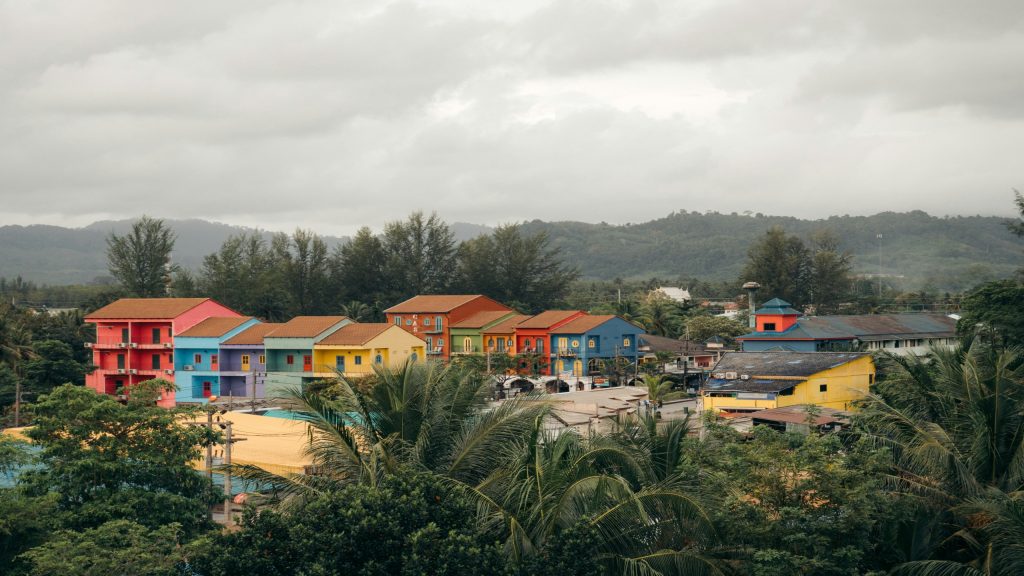
Planning a trip to Thailand? You’re in for something amazing. Whether it’s your first time or you’ve been before, Thailand’s got that perfect mix of chill beaches, wild cities, incredible food, and culture that hits different. This guide has everything you actually need, from top places to visit and helpful tips to a simple Bangkok itinerary to get you started. No pressure, no overplanning, just a solid starting point for your 2025 adventure. Think of it as your low-key Thailand trip planner from someone who’s just as excited about the journey as you are. Top Places to Visit in Thailand in 2025 1. Bangkok—The City That Never Sleeps If you’re planning a Bangkok, Thailand trip and skipping Bangkok… rethink that. It’s loud, a little wild, but honestly, kind of magical. One minute you’re walking through a 200-year-old temple, the next you’re sipping cocktails on a rooftop 40 floors up. It just works. Places you can’t miss: Wat Arun at sunset—trust me, it’s unreal Wat Pho for the massive Reclining Buddha Chatuchak Market if you’re down for cheap clothes, souvenirs, and snacks every few feet Tip: Don’t mess with Bangkok traffic; it’s brutal. Stick to the BTS Skytrain or catch a riverboat. It’s faster, cheaper, and kind of fun. Sample 3-Day Bangkok Itinerary: Day 1: Hit the big temples and take a river cruise Day 2: Shop ‘til you drop + street food crawl (save room for mango sticky rice) Day 3: Do a chill day trip either to Ayutthaya (ancient ruins) or a floating market Bangkok can feel overwhelming at first, but once you settle in, you’ll get why it’s a must on every Thailand travel planner. Just roll with the chaos that’s part of the charm. 2. Chiang Mai – Slow Days, Good Energy Chiang Mai feels like a deep breath after the buzz of Bangkok. It’s up in the mountains, way more laid-back, and kind of perfect if you’re into nature, temples, and slow mornings with good coffee. You’ll spend your days wandering through night markets, visiting peaceful temples, and maybe even hanging out with elephants (the nice, ethical kind—no rides, just love). What’s worth your time: Doi Suthep Temple—the view from the top is unreal Local night bazaars—perfect for souvenirs and endless street food An elephant sanctuary And if you’re there in November, catch the Yi Peng Lantern Festival with floating lanterns everywhere. It’s one of those moments you’ll never forget. Tip: November is the sweet spot. Cooler temps, fewer tourists, and the whole city just feel alive during festival season. Chiang Mai isn’t about rushing around; it’s more like… take it slow, enjoy the vibes, and let the place grow on you. If you’re planning your Thailand holiday guide and want something meaningful (and super chill), this is your place. 3. Phuket – Sun, Sea & Zero Regrets Phuket’s the kind of place that makes you want to ditch your return ticket. It’s all palm trees, blue water, and a “let’s just stay forever” vibe. Whether you’re there to party, explore, or fully unplug, it just works. You’ll probably end up at Patong Beach at least once. It’s loud, messy, and kind of chaotic… but also kind of fun. If that’s not your scene, no worries; there are way more peaceful spots too. Definitely take a boat trip out to the Phi Phi Islands. Yeah, it’s touristy, but it’s also insanely beautiful. And at some point, go visit the Big Buddha. It’s quiet, up on a hill, and the views over the island are actually kind of surreal. Tip: Stay on the west side of the island if you’re into sunsets and want a break from the noise. The beaches are calmer, and the vibes are unbeatable. Phuket’s a must for any Thailand trip planner, especially if you’re looking to mix a little adventure with a whole lot of chill. 4. Krabi—Straight-Up Coastal Magic Krabi is a screensaver IRL. You’ve got these giant limestone cliffs, crazy blue water, and beaches that are somehow both chill and dramatic at the same time. Musts: Railay Beach—no roads, just boats and jaw-dropping views Ao Nang—super chill, good food, easy vibes Island hopping—hit up Koh Phi Phi or Koh Lanta (yes, both if you can) Tip: Book the early boat tours; it’s quieter, cooler, and ideal for stunning photos. If your Thailand itinerary doesn’t include Krabi, it’s time to reconsider. The experience is nothing short of cinematic. 5. Pai—Your Soft Life Era Pai is tiny, peaceful, and kind of magical. It’s the place you go when you’re tired of being “on” all the time. No big plans, no loud crowds—just mountains, fresh air, and a slow pace that hits different. What you’ll find: Hot springs, waterfalls, sleepy cafés, people playing guitar at sunset, and the kind of quiet that makes you actually breathe. It’s not flashy, and that’s exactly the point. Tip: Rent a scooter and just cruise around. No map needed. Every random road leads to something pretty. Pai won’t be for everyone. But if you’re craving calm, creativity, or just a break from the noise, this is your sign to add it to your Thailand trip guide. FAQs About Traveling to Thailand (2025 Edition) 1. What’s the best time to visit Thailand? Thailand is great year-round, but the best weather is from November to February—cooler, drier, and perfect for sightseeing or beach-hopping. A good Thailand vacation planner will help you avoid the rainy season in the south and extreme heat in the north. 2. Do I need a visa to travel to Thailand? Depends on your passport. Many countries get a 30-day visa exemption, but always double-check. A solid Thailand travel planner or Thailand tour guide should include up-to-date visa info. 3. Is Thailand expensive for travelers? Not really. Thailand can be super affordable, especially for food, transport, and accommodation. Whether you’re going luxe or backpacker, a good Thailand trip planner can help you stick to your budget. 4. Is it safe to travel solo in Thailand? Yes,
Romantic Getaway to Malaysia: The Ultimate Travel Guide for Couples
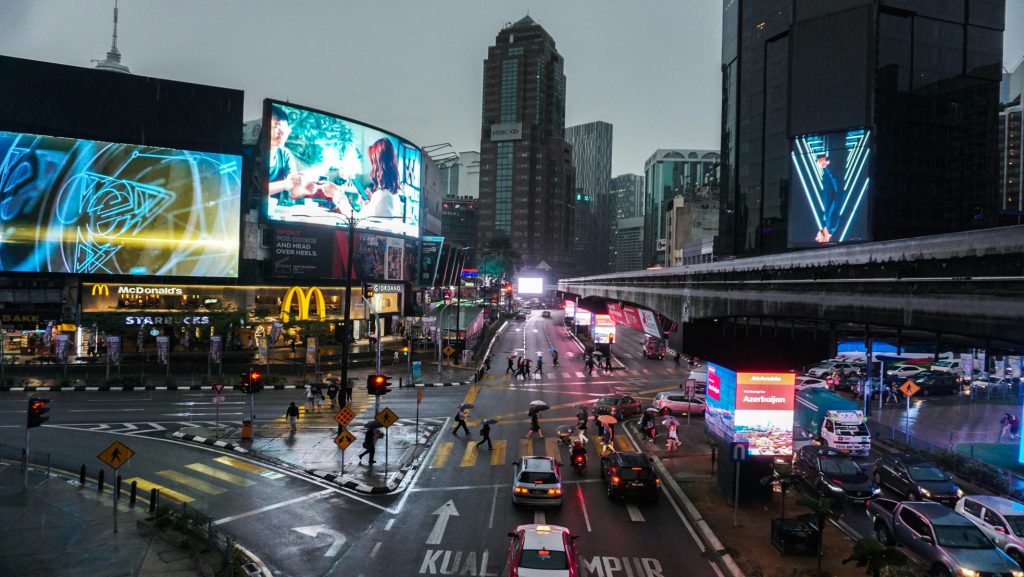
Malaysia, for More Than Just a Vacation A trip for two deserves more than just a good view. It deserves meaning, comfort, and a few unforgettable surprises. If you’re thinking of a romantic getaway to Malaysia, you’re already on the right track. This Southeast Asian gem blends culture, beaches, mountains, and food in a way few places can. And what’s even better? It suits all kinds of couples — relaxed, adventurous, curious, or just deeply in love. Whether you’re sketching your Malaysia travel itinerary on a napkin or working with a seasoned Malaysia trip planner, this country opens its arms to you. Coastal Calm: Where the Sea Meets the Heart First things first — the islands. Langkawi is a solid favourite among couples, and not just because it’s gorgeous. The sunsets over Pantai Cenang, the cable car rides, and even the mangrove boat tours feel special when you’re sharing them with someone. If you want fewer crowds, try Perhentian Islands or Rawa, where there is less buzz, more space. Think of it as your private slice of paradise. Tip: Most Malaysia vacation guides don’t highlight this, but some island beaches are completely empty after sunset. A blanket, a packed dinner, and the sound of waves? That’s romance, untouched. Misty Mornings & Tea Trails: Highland Escapes Now, if you’d rather wrap yourself in a sweater than a sarong, Cameron Highlands will treat you well. Long walks through tea plantations, cool air, and quiet mornings make it a dreamy spot for two. Not far off, Bukit Tinggi offers a charming, European-style escape. It’s cute, quirky, and oddly perfect for couples. These places may not appear at the top of every Malaysia trip guide, but that’s why they’re worth discovering. Tip: Wake up early, visit a local tea farm, and just talk. No distractions. These are the quiet memories you’ll remember most. A City That Surprises: Kuala Lumpur for Couples Big cities aren’t always romantic, unless it’s Kuala Lumpur. Between the glass towers and food stalls, you’ll find quiet gardens, rooftop dinners, and art corners waiting to be explored. Spend a slow morning at Lake Gardens, walk through Batu Caves, then grab dinner with a view of the Petronas Towers. And don’t miss Jalan Alor — noisy, colorful, and full of flavours. Holding hands in the crowd while deciding between satay and noodles? Weirdly romantic. This city should definitely be part of your Malaysia travel planner or Malaysia tour guide notes. It breaks up nature with just enough modern charm. Offbeat, Unfiltered, Unforgettable For couples who want more than a highlight reel, there’s Borneo, home to orangutans, dense forests, and river cruises at dusk. It’s different. It’s real. And it might just be the part of the trip you talk about the most when you’re back home. Places like Lake Kenyir or small towns near Kota Belud aren’t standard in every Malaysia holiday guide, but if you like the idea of cooking over fire or kayaking under stars, add them to your map. Tip: If you’re unsure where to begin with the offbeat stuff, reach out to a small travel agency in Malaysia. They’ll likely know a lot more than generic websites. Your Trip, Your Way There’s no perfect way to explore Malaysia as a couple. You might prefer planning every detail, or you might book one night and see where the road takes you. Either way, having a rough outline from a Malaysia travel guide helps. Just don’t lock yourself into a rigid plan. Malaysia flows, and your trip should too. A Week in Malaysia: Romantic Itinerary for Two If you’re planning your trip without a full-time Malaysia tour guide, here’s a flexible Malaysia travel itinerary to inspire you. You can swap, stretch, or shorten it depending on how you like to travel. Day 1-2: Arrive in Kuala Lumpur Start slow. Land in Kuala Lumpur, settle into a charming boutique stay, and let the city surprise you. Visit the Petronas Towers in the evening for dazzling skyline views Wander through the Islamic Arts Museum or stroll inside Perdana Botanical Garden Grab dinner at a rooftop spot — Marini’s or Heli Lounge are popular Tip: Use your first day to plan the rest of your trip. You’ll find helpful insights even in casual chats with locals or your hotel host. Day 3-4: Cameron Highlands Escape Head to Cameron Highlands — a few hours from KL by road. The cooler temperatures and laid-back pace are perfect after the city buzz. Stay in a cottage or cozy guesthouse among the hills Visit a tea plantation together, try local strawberry jam Hike a short trail, or just relax at a café with valley views Tip: Pack a jacket — temperatures can dip below 15°C, especially in the evenings. Day 5-6: Langkawi’s Sunsets & Sea Breeze Catch a flight to Langkawi, the island that balances nature, adventure, and romance. Take a sunset cruise or kayak through mangroves Ride the Langkawi SkyCab — it’s breathtaking Relax on Tanjung Rhu or explore hidden beaches Most Malaysia trip planners recommend Langkawi because it offers a peaceful atmosphere without losing modern comforts. Tip: Rent a scooter to explore the island on your own — it’s cheaper and much more fun. Day 7: Fly back or extend to Penang If you’ve got time, consider spending an extra day in Penang. The art-lined streets of George Town, the rich heritage, and food scene make it a fun way to wrap things up. Tip: Try local dishes like Char Kway Teow or Nasi Kandar — a good end to your romantic getaway. Helpful Travel Tips for Couples Travel Documents: Malaysia is visa-free for many nationalities for short stays. Still, check with a travel agency in Malaysia if unsure. Currency: Malaysian Ringgit (MYR) is widely accepted, but some remote places prefer cash. Transport: Flights between cities are cheap, and long-distance buses are reliable. Language: English is widely spoken, especially in tourist zones. Cultural Respect: Malaysia is
Malaysia Travel Guide 2025: Everything You Need to Plan a Perfect Trip
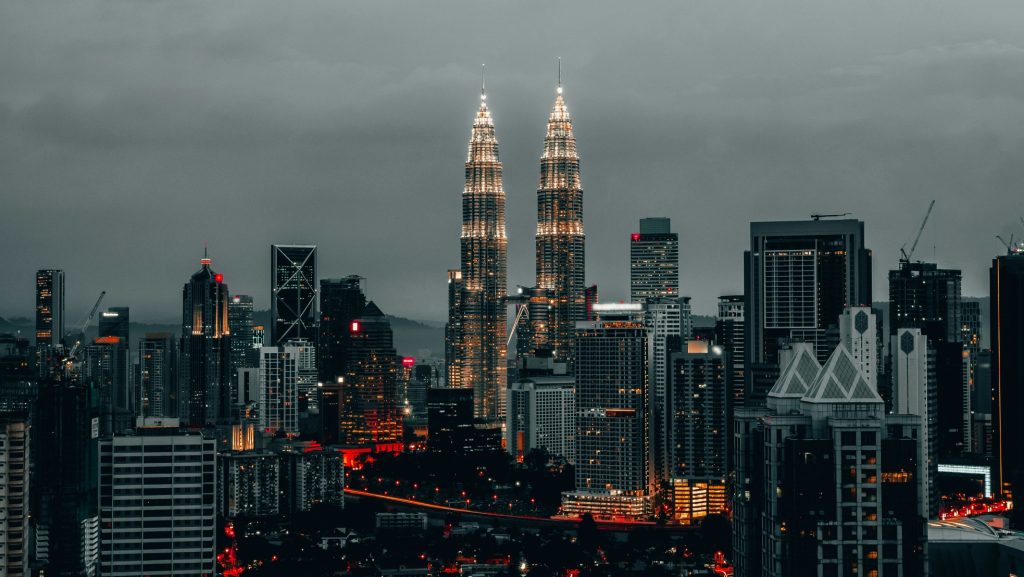
Malaysia Is More Than Just a Destination Let’s be honest, Malaysia doesn’t always top people’s bucket lists the way Bali or Thailand might. But once you land here, you’ll wonder why it took you so long. The place is a beautiful mix of cultures, flavors, landscapes, and languages, all layered into one unforgettable experience. If you’re building a Malaysia trip planner or looking for the ultimate Malaysia travel guide, you’re in the right place. You’re not just checking off places here, you’re walking through history in Melaka, eating the best noodles of your life in Penang, and watching the sun rise over misty tea hills in the Cameron Highlands. Whether you’re coming for adventure, food, relaxation, or a bit of everything, this guide will help you map out your trip your way. Where Should You Even Begin? Here’s the deal: Malaysia is split into two parts – Peninsular Malaysia (the west, where KL and Langkawi are) and Malaysian Borneo (the east, home to orangutans and wild rainforests). Both sides are incredible, but it depends on the kind of trip you’re dreaming about. Want big cities and cultural depth? Head to Kuala Lumpur, Penang, or Melaka. Craving a chill island vibe? Try Langkawi, Perhentian Islands, or Tioman. More into eco-adventures and wildlife? Borneo’s Sabah and Sarawak are your go-to. Whether you’re planning a short Malaysia vacation or a long, slow journey through the region, a clear Malaysia travel itinerary helps, but don’t let it box you in. Tip: Most travelers make the mistake of cramming too much into one trip. Malaysia rewards slow travel. So, pick fewer places and enjoy them fully. Weather, Timing & Crowd-Free Travel Now, about the weather. Malaysia is tropical all year, but it still has distinct wet and dry seasons, just not the way you might expect. West Coast (KL, Langkawi, Penang): Best between Nov–April East Coast (Perhentian, Redang, Tioman): Best between March–October Borneo (Sabah, Sarawak): Generally good from May–September Avoid peak domestic travel periods (Malaysian school holidays and Eid) if you’re not a fan of crowds. Want to catch a cultural celebration? Time your visit with Thaipusam (Jan/Feb), Chinese New Year, or Hari Raya. Local Insight: Sometimes, a little rain brings out the best in a place – cooler temps, fewer tourists, and moody skies that look great in photos. Picking the Right Spots for Your Trip Here’s a quick breakdown to help you build a Malaysia trip itinerary that actually makes sense: Kuala Lumpur Yes, it’s modern and full of malls, but there’s also street food, mosques, temples, rooftop bars, and neighborhoods that feel like their own worlds. Start here if it’s your first time. Penang If you like eating, and let’s be honest, who doesn’t. Penang is your paradise. It’s also packed with murals, temples, and history. A must on any serious Malaysia vacation guide. Langkawi Think waterfalls, cable cars, clean beaches, and cheap duty-free shops. It’s a favorite in many Malaysia honeymoon tour packages because it combines comfort and nature effortlessly. Cameron Highlands Tea plantations, strawberry farms, and cool mountain air? Yes, please. A perfect escape when you want a break from the tropical heat. Borneo (Sabah & Sarawak) This is Malaysia’s wild side – orangutans, caves, tribal villages, and rainforest treks. If your Malaysia holiday guide includes adventure, you’ll love it here. Tip: Use a mix of city, coast, and highland in your route. It keeps the trip dynamic without burning you out. Should You Book a Planner or Go DIY? Here’s where most travelers get stuck. Do you piece together your journey using blogs and booking sites? Or trust a travel agency in Malaysia to do the heavy lifting? Honestly? It depends on how much time and energy you want to spend planning. If you love the research phase and customizing every detail, go DIY with help from a Malaysia tour guide book or a reliable online Malaysia trip planner. But if you’re short on time or want someone local to help you get the best deals and experiences, go for curated Malaysia travel packages or talk to Malaysia tour operators directly. Tip: Good travel agents for Malaysia trips often know about small lodges, local experiences, or routes most tourists miss. Worth it if you’re going for something special like a romantic getaway or family reunion. 7-Day Malaysia Travel Itinerary: Flexible & Fun You don’t need a rigid plan to enjoy Malaysia, but a little structure helps you make the most of your time. Here’s a sample 7-day Malaysia travel itinerary that blends culture, nature, and a little romance if you’re after a romantic getaway in Malaysia. Day 1: Kuala Lumpur Land and relax. Take it easy after your flight. Walk around Chinatown, Merdeka Square, and Bukit Bintang. Enjoy sunset views from a rooftop bar near the Petronas Towers. Tip: For a more local experience, skip the hotel chain and try a heritage boutique hotel in Kampung Baru or Bangsar. Day 2: Explore KL & Batu Caves Visit Batu Caves early to avoid crowds Check out the Islamic Arts Museum or the National Mosque Try nasi lemak at a roadside stall (it’s better than it sounds!) Tip: Speak with a local Malaysia tour guide or city expert if you prefer guided day tours to key sites. Day 3: Cameron Highlands (by car or bus) Head out for some cool mountain air—great detour on a Malaysia road trip Visit a tea plantation, strawberry farms, or go for a light jungle trek Stay in a cozy guest house surrounded by the forest Tip: If you’re planning with a Malaysia tour planner, request private transfers. It’s more comfortable than a bumpy bus ride. Day 4–5: Penang Drive or fly to Penang (budget flights take 1 hour) Walk the colorful alleys of George Town and check out the street art Feast on laksa, char kway teow, and cendol Visit Kek Lok Si Temple, Penang Hill, or simply relax by the sea Pro Tip: A proper Malaysia vacation
Kerala Road Trip Itinerary: Scenic Routes, Hidden Gems & Pro Tips
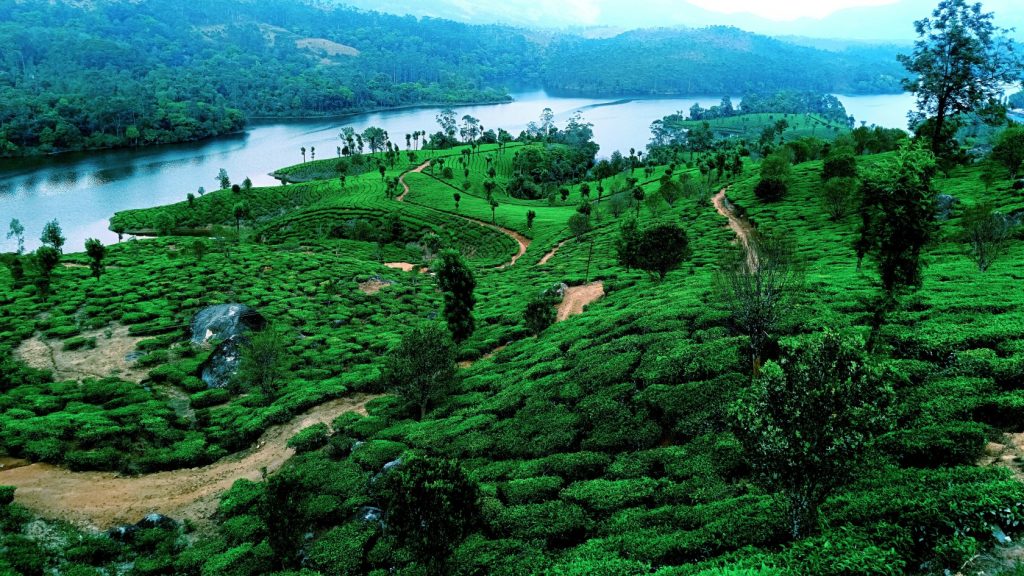
Why a Kerala Road Trip is More Than Just a Vacation Think of a place where the landscape shifts every few hours—from sun-drenched coastlines to mist-covered hills, and then onto the still waters of backwaters and thick forested interiors. That’s Kerala. And while it’s easy to book a Kerala tour package, nothing compares to taking the wheel (or the passenger seat) and experiencing the state up close. A well-planned Kerala road trip gives you the freedom to move at your own pace. Whether you’re leaning on a Kerala travel planner for the broad strokes or plotting it all from scratch, the result is the same: a journey packed with charm, spontaneity, and stories. Pro Tip: Don’t rush the route. Some of the best Kerala moments happen between destinations. Day 1–2: Kochi – Begin with Culture and Coastal Calm Kochi, often the starting point of most Kerala travel packages, is more than a pitstop. It’s where tradition meets the contemporary in a seamless blend. Begin your journey with a couple of relaxed days in Fort Kochi, a neighborhood where every street corner tells a tale. Spend time walking through colonial lanes, sipping filtered coffee at art cafés, and watching the sunset behind Chinese fishing nets. It’s a gentle introduction to Kerala tourism—slow-paced, cultural, and deeply welcoming. Visit Mattancherry Palace and the centuries-old synagogue Shop for antiques and handicrafts in Jew Town Try a Kathakali show or a Kalaripayattu performance You could stay at a restored heritage homestay or one of the boutique hotels the area is known for. This area is ideal for both backpackers and those on a Kerala honeymoon tour package looking to start their trip on a relaxed note. Pro Tip: Early morning walks in Fort Kochi are peaceful, photogenic, and crowd-free. Day 3: Kochi to Munnar – Into the Western Ghats (Approx. 130 km, 4–5 hrs) Leave the coastline behind as you head toward the hills. The route to Munnar is one of Kerala’s most scenic drives—dense forest patches, cascading waterfalls, and winding mountain roads. Munnar, a centerpiece of any Kerala hill station tour, welcomes you with emerald tea estates and cool, refreshing air. Stop for a tea break at Cheeyappara Waterfalls or take a detour to spice gardens along the way. Once in Munnar, explore the Tea Museum, walk through tea gardens, or enjoy a boat ride at Mattupetty Dam. This destination works beautifully for families, couples, or even solo travelers who love nature. Many Kerala family tour packages include Munnar, but when you arrive on your own terms, the experience is more intimate. Pro Tip: Book a stay slightly outside Munnar town for quieter nights and better mountain views. Day 4: Munnar to Thekkady – From Tea Trails to Tiger Country (Approx. 90 km, 3 hrs) As you descend from Munnar and head east to Thekkady, the terrain thickens into forest. Thekkady is home to the Periyar Wildlife Sanctuary, one of India’s richest biodiversity spots and a highlight of any Kerala vacation itinerary. While boat safaris are popular, try a guided forest walk or bamboo rafting session to truly immerse yourself. Afterward, stroll through the spice markets and treat yourself to a traditional Ayurvedic massage. There are several lodges, jungle resorts, and Kerala tour operators that arrange nature-based activities. Thekkady suits travelers seeking a blend of relaxation and adventure. Pro Tip: Many eco-resorts here offer night treks and early-morning bird watching—great ways to see the jungle wake up. Day 5: Thekkady to Vagamon – Kerala’s Quiet Side (Approx. 60 km, 2–2.5 hrs) Vagamon is often left off conventional Kerala tour planner routes—and that’s exactly what makes it special. Tucked between hills and pine forests, this sleepy village is perfect if you’re looking to slow down even more. Take a walk through the meadows, visit the Kurisumala Ashram, or simply enjoy the fog rolling in from your balcony. It’s peaceful, unhurried, and truly offbeat. This is a great stop for those crafting a custom Kerala trip and want to explore lesser-known spots. And yes, it’s incredibly romantic if you’re traveling as a couple. Pro Tip: If you love paragliding, Vagamon is one of the few places in Kerala where you can soar above tea gardens. Day 6: Vagamon to Alleppey – From Hills to Houseboats After soaking in the greenery of Vagamon, it’s time to head towards Alleppey. The drive itself is pretty relaxed — small shops, coconut palms, and villages that seem to move at their own pace. Once you get to Alleppey, or Alappuzha as it’s also called, you’ll know why it’s famous. Everything here flows — the canals, the boats, the pace of life. It’s the heart of Kerala Tourism, and a must-stop for anyone on a Kerala road trip. Most people go straight for the houseboat stay, and for good reason. Gliding through the backwaters on a wooden boat, watching local life go by — it’s not just relaxing, it feels like time stops. If you’re not into boats, there are great homestays right on the water too. Tip: Don’t book the first boat you see. Walk around the dock and talk to locals. You’ll find a quieter, cleaner one at a better price. Day 7: Alleppey to Varkala – Laid-Back by the Sea The next stretch takes you further down the coast to Varkala. Unlike Alleppey’s canals, Varkala gives you cliffs and the open sea. It’s not part of every Kerala tour package, but honestly, it should be. The beach here isn’t packed with loud crowds. Instead, you’ll find quiet cafés, yoga studios, and travelers who came for a weekend and never left. If you’ve been busy ticking off places, this is where you slow down. You can also find simple local restaurants serving authentic Kerala food, and guesthouses with ocean views that don’t cost a fortune. Tip: Wake up early and walk along the cliff path before breakfast. The views (and the breeze) are worth it. Day 8:
Top 10 Things to Include in Your Kerala Honeymoon Tour Package
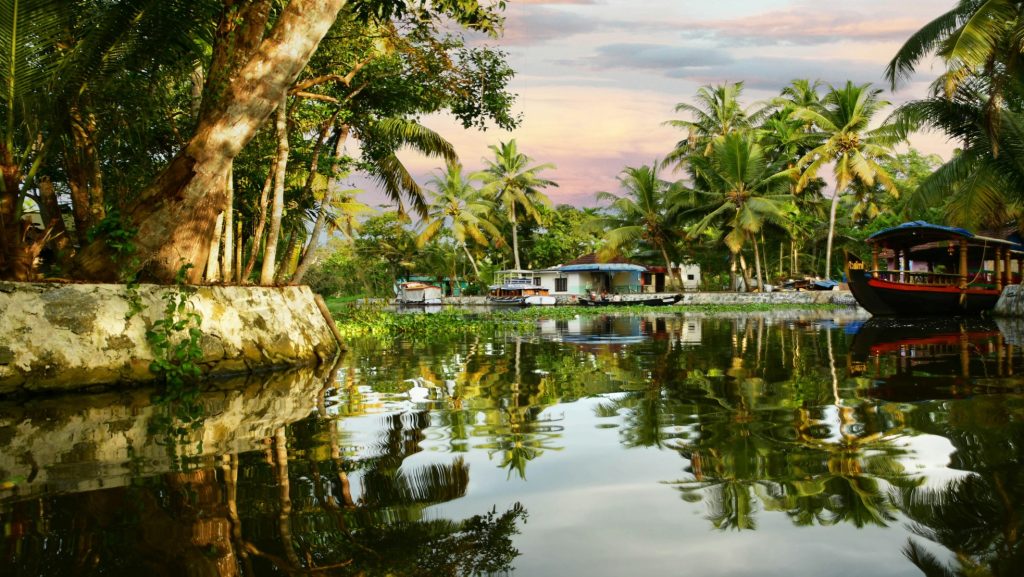
When you think of a honeymoon in India, Kerala probably lands at the top of the list, and with good reason. Between its quiet beaches, scenic hills, and lazy backwaters, there’s something deeply calming about this place. It’s not just about ticking destinations off a list. A honeymoon here feels like a slow, unfolding story, especially when you plan it right. Let’s walk through a few experiences worth adding to your Kerala honeymoon tour package that’ll leave you both relaxed and a little more in love. 1. Drift Through Alleppey’s Backwaters on a Private Houseboat This is probably already on your radar, and it should be. Gliding through Alleppey’s backwaters on a wooden houseboat, just the two of you and the water, is more peaceful than any luxury resort. Many Kerala tour packages include this as a highlight, but go for the private one with a simple layout and good food. You don’t need much more. Pro tip: Avoid the biggest boats. Smaller ones feel more personal, and they usually take quieter routes. 2. Slow Down in the Misty Tea Gardens of Munnar Munnar is cool—literally and emotionally. The air smells like tea leaves and eucalyptus, and even a walk through the plantations feels poetic. This is one of those places where you don’t have to “do” anything. Just sit with a cup of chai and watch the fog roll by. If you’re using a Kerala trip planner, ask for a few nights here. There are plenty of hillside bungalows and quiet boutique stays. Pro tip: Wake up early. Munnar mornings are magic. 3. Beach Days and Lighthouse Views in Kovalam Kovalam offers a nice contrast to the hills and forests. It’s sunny, laid-back, and has some of the cleanest beaches on the West Coast. If you love the idea of sipping coconut water with your toes in the sand, this is your spot. You’ll find beachfront hotels that include spa treatments and candlelight dinners in many Kerala holiday packages. Don’t miss the sunset view from the lighthouse, it’s simple, but perfect. Pro tip: Pick a weekday to visit. Kovalam gets crowded over the weekend. 4. Traditional Ayurveda Couple Therapy You don’t really know what “relaxation” means until you’ve had an authentic Ayurvedic massage in Kerala. For couples, many resorts offer side-by-side therapies using herbal oils and age-old techniques. You leave feeling light and refreshed, like your body’s been reset. Most Kerala travel packages or even local travel agents for Kerala trips will include this as an optional activity. If not, ask for it! Pro tip: Go for a certified Ayurvedic center. There’s a lot of variation in quality. 5. Jungle Walks and Bamboo Rafting in Thekkady Looking for something that’s not all about lounging? Head to Thekkady. It’s green, wild, and gives you a chance to explore nature together. You can go on early morning jungle walks, take a bamboo raft on Periyar Lake, or just watch the birds from your balcony. It’s a refreshing switch from the usual honeymoon routine, and some Kerala tour guides offer special couple-focused activities here. Pro tip: Try staying in a treehouse or a forest cottage for the full experience. 6. Escape to Wayanad’s Waterfalls and Coffee Trails Wayanad isn’t always the first place you see in a travel brochure, but it’s easily one of Kerala’s hidden gems. Tucked away in the Western Ghats, it’s a blend of quiet forests, hilltop viewpoints, and misty waterfalls. For honeymooners, Wayanad is great if you’re looking for a mix of comfort and adventure. Whether it’s hiking to Meenmutty Falls, sipping coffee on a plantation, or simply doing nothing in a treehouse. You’ll feel far, far away from the world. Pro tip: Choose stays near the forest or a stream. The sound of nature here is better than any playlist. 7. Get Lost (in the Best Way) in Fort Kochi’s Streets After all the greenery, Kochi adds a burst of color to your trip. Fort Kochi is a mix of colonial charm, local art cafés, and narrow lanes full of surprises. It’s not your usual honeymoon spot, but that’s what makes it interesting. If you love slow mornings, hand-in-hand walks, and good food, add Kochi to your Kerala trip itinerary. Some Kerala vacation packages even throw in a Kathakali performance or a spice market visit—don’t skip those. Pro tip: Go café-hopping in the afternoon and walk along the beach during sunset. Totally different vibe. 8. Plan a Scenic Kerala Road Trip Together Not every couple wants to stay in one place. If you two are the kind who bond over playlists and window views, consider adding a small road trip to your Kerala honeymoon tour package. You can drive from Kochi to Munnar, Thekkady to Alleppey, or even explore the Vagamon route. Most Kerala tour operators can help with renting a car with a driver, or if you’re confident, you can self-drive. It’s a great way to explore smaller towns, unplanned viewpoints, and roadside tea stalls. Pro tip: Avoid night travel in hilly regions. Roads are narrow, and you won’t want to miss the views anyway. 9. Add a Dash of Local Culture and Cuisine Kerala’s culture is subtle but rich. From the moment you land, you’ll hear the language, see the art, and taste the difference. Instead of just watching from a distance, try to include hands-on experiences in your Kerala honeymoon tour. Learn to cook Kerala-style fish curry, attend a local temple festival, or even watch a Theyyam performance if you’re heading north. These moments often stay with you longer than the sights do. Pro tip: Ask your homestay hosts about local events; they know what’s happening better than any guidebook. 10. End Your Trip with a Relaxing Beach Stay Finish your honeymoon on a slow note. After all the movement, it’s nice to spend your last night or two doing absolutely nothing. Mararikulam, Varkala, or even Poovar are all quieter
Wellness, Workshops & Wow Moments: Revamp Office Culture Today

Let’s be honest, most office events feel the same. A pizza party here, a Zoom quiz there, maybe a team lunch once a quarter. And then we wonder why everyone’s burned out, disengaged, or halfway out the door. But what if office culture could feel… exciting again? Welcome to the new era of workplace vibes, where karaoke nights, yoga sessions, paintball face-offs, and even “paint with puppies” afternoons are part of the plan, not rare exceptions. In-office activations are amazing in their own way, but sometimes stepping out and doing something together changes the way teams connect and bond. This isn’t just fluff. It’s a smarter way to build connections, boost morale, and yes, actually make people want to show up. So if your team’s looking a little too glued to their screens lately, here’s how to bring back the energy without feeling like you’re forcing fun. The Real Deal With Culture Today Here’s the thing: work has changed. People don’t just want a paycheck; they want a sense of belonging, mental space, and real human connection. And if your office still treats culture like a checkbox (cue the “Team Lunch” calendar invite), you’re already falling behind. The solution? Mix it up. Let’s look at the kind of stuff that actually makes people look forward to Mondays. It doesn’t have to be extravagant or expensive—you can create memorable, in-city corporate day-outs that are fun and budget-friendly. From Karaoke Chaos to DJ Vibes Who said you need a swanky venue to party with your team? A basic setup, a half-decent speaker, and someone brave enough to sing the first song, that’s all you need for a Karaoke Night that turns into a legend. Or go all out with a DJ evening in-office. Throw in some mood lights, snacks, and a playlist that doesn’t include elevator music. Watch your finance team out-dance marketing. Let’s Play: Trivia, Games & Mystery Rooms There’s something about Trivia Nights that gets people talking and yelling (in a good way). Whether it’s movie quotes or office gossip turned quiz questions, it’s an instant mood-lifter. Looking for something more immersive? Try a Mystery Room challenge or an in-office escape game. People forget emails exist when they’re too busy solving clues with colleagues. Paint with Puppies If you want the ultimate crowd-pleaser, this is it. Teams get together to paint, nothing fancy, just fun, and they’re surrounded by playful rescue puppies. It’s part team-building, part therapy, and all joy. It’s not just cute. It’s impactful. Activities like this lower stress levels, increase dopamine, and get people genuinely talking (instead of just typing on Slack). Active Vibes: Hiking, Paintball & More Let’s get one thing straight: not all team-building needs to be indoors. In fact, some of the best bonding happens outside the office walls. Plan a weekend hike to a nearby trail, organize a paintball tournament between departments, or try something like Boulder Box climbing. It’s mental and physical teamwork rolled into one. For the more sporty bunch, office sports tournaments (think cricket, football, or even tug-of-war) tap into team spirit like nothing else. Yoga, Sound Healing & Ayurvedic TLC Burnout doesn’t just disappear with a long weekend. You’ve got to build wellness into the work culture. Start small: weekly yoga sessions, guided sound healing meditations, or on-site Ayurvedic massages during high-stress weeks (hello, audit season). Employees come back clearer, calmer, and yes, more focused. This isn’t about turning your office into a retreat center. It’s about making space for recovery in the middle of the hustle. Workshops That Don’t Feel Like Work (But Still Kinda Are) Let’s be real, most people don’t want to sit through another “team-building activity” that feels like homework. But give them a table full of fabric, colors, maybe some string or clay, and suddenly, you’ve got people opening up, laughing, and making things with their hands like it’s art class all over again. Macrame, Tie & Dye, Crochet (Yes, Really) This stuff is unexpectedly therapeutic. Teams huddle up, sip on iced tea, and suddenly they’re deep into knotting jute or tying rubber bands on cloth like pros. It’s quiet. It’s weirdly calming. And it gets folks talking not about work, but life. Which is honestly where the real bonding happens. Some even get obsessed. We’ve seen people start crocheting during Zoom calls later. Clay Play & Carpet Weaving Nothing fancy, just your team, some soft clay, and a whole lot of creativity (and maybe a little mess). Or try your hand at traditional carpet weaving, like the kind your grandparents might’ve seen. It’s slow, satisfying, and way more fun than it sounds. Plus, it’s a total reset from screen time. Experiential Lunches: Not Your Basic Buffet Office lunch, but make it interesting. Think beyond paneer butter masala in silver trays. What if lunch was also a memory? Try a theme-based food pop-up. Or have different teams host lunches from their home states. Gujarati thalis, South Indian banana-leaf style, or even fusion chaat experiments. Add some blindfold taste tests or DIY food stations and boom, people actually remember it. Food + fun = peak engagement. Works every time. Let’s Take This Outside: Retreats That Actually Work Forget boring resorts with bad lighting and long presentations. A real corporate getaway should feel like you’ve hit pause on work, but still picked up something meaningful. Want ideas? Here’s what’s working: Goa: Beach walks, sunset sessions, and seafood that makes people happy. Coorg: Misty mornings, waterfall treks, and way too much filter coffee. Dehradun/Rishikesh: For when you want some chill vibes, river rafting, or a little spirituality thrown in. Near Gurgaon: Quick escapes with bonfires, outdoor games, and zero signal (on purpose). Add a light strategy session, maybe some open mic storytelling, and you’ve got a retreat that people won’t just tolerate, they’ll actually ask for more. Corporate Events That Don’t Feel Like Chores Yes, we still need AGMs, training sessions, and leadership
Solo Trip to Ladakh: Complete Travel Guide for Independent Explorers
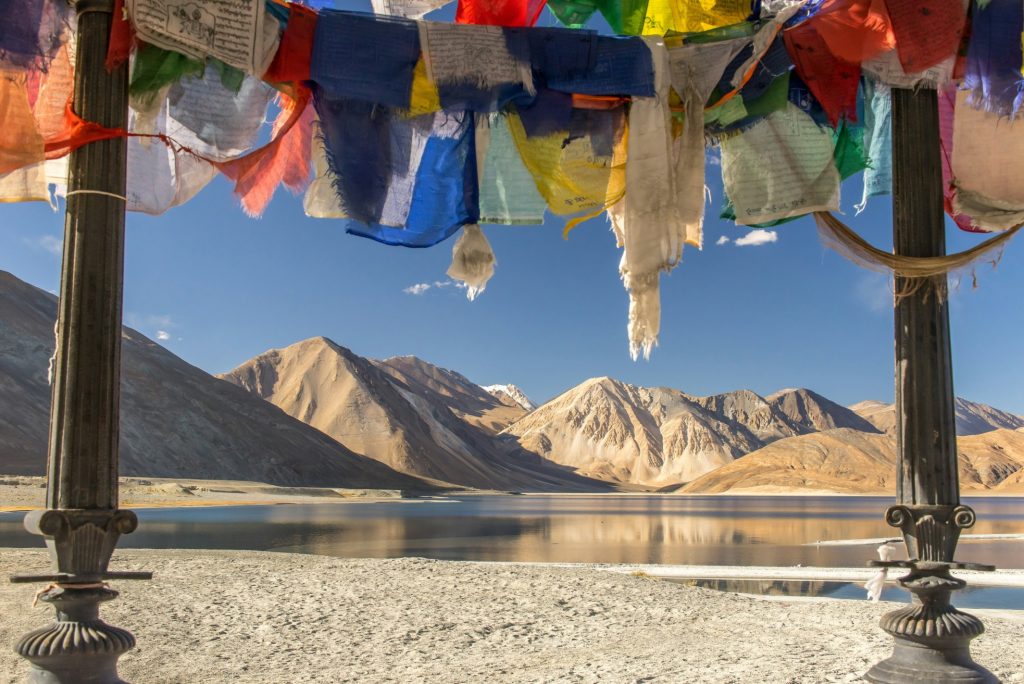
Ladakh Beyond the Obvious Ladakh is often imagined as a land of high passes, barren mountains, and frozen lakes. But for a solo traveller, there’s more than just dramatic landscapes. It’s a place where silence speaks, locals smile easily, and every road leads to a story. Traveling solo in Ladakh gives you the space to meet people, listen to their stories, and maybe hear your own thoughts more clearly. Whether you’re planning a simple Ladakh trip itinerary or booking one of the flexible Leh Ladakh tour packages, this guide gives you a different lens to explore Ladakh: one that values depth over speed. Tip: Don’t pack your schedule with stops. Let your Ladakh trip breathe. The most memorable moments often come unplanned. Stay With Locals: A More Meaningful Way to Travel There’s something different about Ladakhi hospitality. In small villages like Likir, Turtuk, or Hanu, families open their homes to travellers, offering not just a bed, but warmth and stories. Sharing meals, joining morning routines, and learning local customs all become part of your journey. Many modern Ladakh travel packages now include homestays. These not only help you experience real Ladakh holidays, but also support the local economy. It’s a win-win, especially for solo travellers looking for a safe and meaningful stay. Tip: Seek out women-run or community-approved homestays. They’re trustworthy and often lead to the most enriching conversations. Beyond Pangong: Hidden Paths Worth Finding Everyone talks about Pangong Lake and Khardung La, but Ladakh has trails that are quieter, more soulful, and just as beautiful. The Dah and Hanu region, home to the Drokpa community, is rarely visited but full of character. Or try the routes around Rumbak Valley, great for soft treks and wildlife. These aren’t your typical Leh Ladakh tour packages stops. And that’s why they matter. They give you time to walk slowly, speak with locals, and actually feel the place instead of just photographing it. Tip: Local guides aren’t just helpful—they’re essential. Many know hidden trails and offer insight you won’t find online. Time Your Trip for Culture, Not Just Climate Most travellers visit Ladakh between May and September, when the roads are open and the skies are clear. But for solo travellers, timing your trip with cultural festivals can make the experience even more powerful. Hemis Festival (July): Colourful dances and spiritual music Yuru Kabgyat (June): Held at Lamayuru, quieter but full of energy Sindhu Darshan (June): Celebrating the Indus and India’s unity These aren’t just performances; they’re expressions of Ladakhi identity. Attending even one can add so much richness to your Ladakh travel itinerary. Tip: Arrive in Leh at least two days before heading higher. You’ll enjoy the festival more if you’re well acclimatised. Silent Moments: The Spiritual Side of Ladakh Sometimes, solo travel is less about moving and more about pausing. In Ladakh, monasteries like Lamayuru, Diskit, and Phuktal invite you to do just that. You don’t need to be religious to feel something inside those quiet halls. Staying overnight at a monastery or even just sitting quietly during a prayer session can shift your whole journey. For many, this becomes the heart of their Ladakh trip. Tip: Be respectful. Ask for permission before joining any rituals or meals. And when in doubt, just sit and observe. Smart Travel Tips for Solo Explorers Connectivity: Postpaid SIMs from BSNL and Jio work best. Money: Carry enough cash, especially outside Leh. Clothing: Dress in layers. The weather turns quickly. Transport: Shared cabs from Leh are budget-friendly and safe. Tip: Always keep your Ladakh itinerary printed and your permits in a folder. The signal can disappear without warning. This version of Ladakh isn’t fast or flashy. But if you’re looking for something personal, peaceful, and powerful, this solo journey might just be the one that stays with you forever. Day-by-Day Itinerary for Solo Travelers Seeking Meaningful Adventures This Ladakh journey isn’t about ticking boxes. It’s about taking the road less travelled — literally and figuratively. This itinerary is for those who want their solo trip to mean something: to connect, to reflect, and to explore. Day 1: Settle In — Let Leh Welcome You Ladakh’s altitude isn’t gentle. So when you arrive in Leh, let yourself slow down. Rest, hydrate, and give your body a day to adjust Take a short stroll to Leh Market or visit Shanti Stupa Organize local essentials — SIM card, permits, accommodation Tip: Use this downtime to adjust your plans. Local advice can often be more useful than travel blogs. Day 2: Drive to Likir — Start Small, Go Deep Just a short drive away, Likir offers calm and culture Explore the hilltop monastery with its giant Buddha statue Stay in a village homestay; talk, share tea, ask questions Tip: A small village like Likir is ideal for a solo start — safe, personal, and deeply rooted in tradition. Day 3: Ancient Walls and Empty Trails — Alchi & Mangyu Visit Alchi Monastery — home to intricate frescoes and quiet corners Hike toward Mangyu — one of Ladakh’s least visited but oldest monasteries There’s a quiet here you’ll rarely find elsewhere. Tip: There won’t be shops en route, so bring your own snacks and water. Simplicity is part of the experience. Day 4: Journey to Turtuk — Another Side of Ladakh Travel via the iconic Khardung La Pass to reach Turtuk in Nubra Valley Explore a village with Balti roots, riverside paths, and stories from another time Stay in a homestay nestled among apricot trees Tip: Turtuk is ideal for solo explorers — it’s peaceful, welcoming, and less crowded than other stops. Day 5: Sand, Statues, and Stillness — Diskit Visit the Diskit Monastery, with views that stay with you Stop by the Hunder dunes for a rare camel ride Camp under the stars or stay in a quiet guesthouse Tip: Ask your host about the old trader routes — you’ll get tales you won’t find in any brochure. Day 6: A
Leh-Ladakh Travel Guide: Everything You Need for an Epic Trip
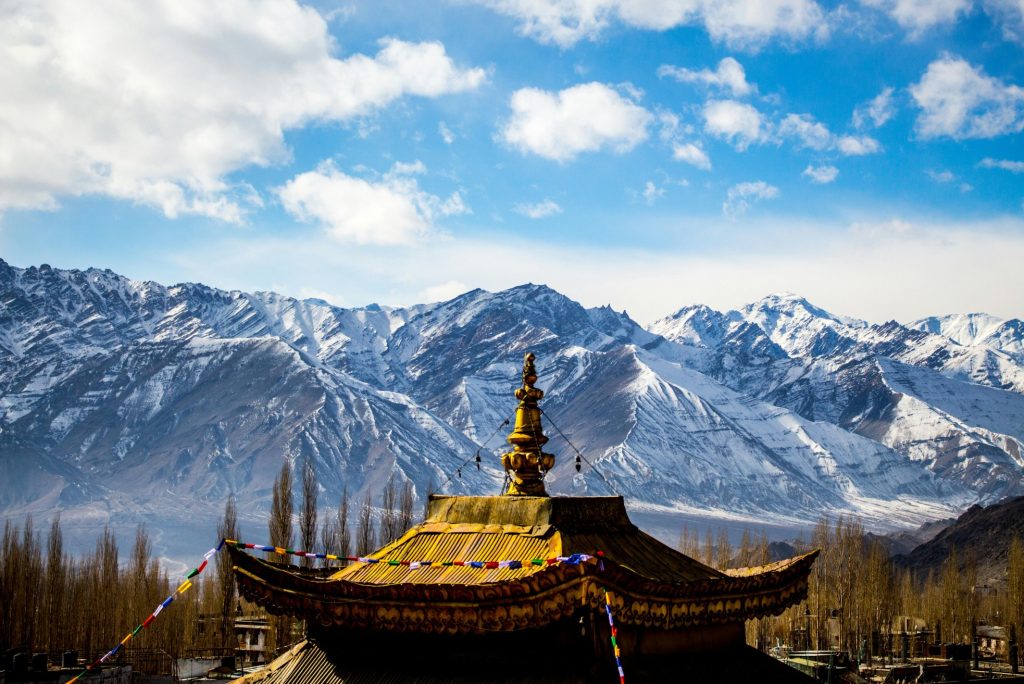
Why Ladakh is the Ultimate Travel Dream Set in the extreme north of India, Ladakh is a land of dream-like beauty and rugged mountains. Known for its dramatic landscapes, vast valleys, and ancient monasteries. A journey through Ladakh offers a once-in-a-lifetime experience of natural wonder, cultural discovery, and adventure. Whether you’re embarking on a Ladakh road trip, planning a Ladakh trekking expedition, or simply looking for immersive Ladakh sightseeing, this region has it all. With growing interest in Leh Ladakh tourism, many travelers now seek curated Ladakh tour packages or build their own Ladakh trip plan to explore this high-altitude desert. Best Time to Visit Ladakh The best time to visit Ladakh is from May to September, when roads are open and the weather is clear. This is also the ideal period for a Ladakh adventure tour, including treks and bike trips but, if you’re planning to visit in Winters (December–February), you’ll find it a bit harsh but it is perfect for extreme routes like the Chadar Trek, which is known as one of the most thrilling experiences in Ladakh trekking. Tip: For a classic Ladakh trip itinerary, choose June or July as these months have fewer roadblocks and perfect visibility for photography and trekking. Ladakh Trip Essentials: Permits, Acclimatization & Safety Permits: During your visit, you will require Inner Line Permits (ILP) in places such as Nubra Valley, Pangong Lake, and Tso Moriri. When you choose Leh Ladakh tour packages, these are usually taken care of. Acclimatization: Ladakh is located at an altitude of over 10,000 feet. I recommend spending at least two days in Leh to acclimatize before starting your Ladakh trip—it’s essential for a safe and enjoyable journey. Safety: Drink plenty of water, do not consume alcohol during the first couple of days, and do not force yourself in case you become dizzy or breathless. Tip: Always carry copies of your ID and permits. If planning a DIY Ladakh road trip, you should pre-print maps as network coverage is limited in remote areas. How to Reach Ladakh & Road Trip Routes There are two iconic routes that you can take for a Leh Ladakh road trip: Srinagar to Leh (434 km) – Open earlier and less steep. Manali to Leh (474 km) – Adventurous, scenic, but more challenging. A Ladakh road trip itinerary often includes stops in Keylong, Sarchu, or Jispa. These are all ideal for rest and acclimatization. Tip: Consider combining both routes in your Ladakh trip plan — travel via Srinagar and return via Manali for a full Himalayan loop. Tour Packages vs. DIY Planning You can either build your own Ladakh itinerary or book a Ladakh trip package through a good and reliable tour company. Most of the Leh Ladakh tour packages include stays, meals, transfers, and permits, which makes it an easy and convenient choice for first-time visitors or groups. DIY travelers can make their own Ladakh travel itinerary, with the help of blogs, forums, and local suggestions online. Tip: If you’re not sure where to start, start by comparing a few Ladakh travel package options online and match them with your ideal Ladakh holiday style, curate it just like you like it. Where to Stay in Ladakh Ladakh offers a range of stays — from cozy guesthouses and eco-camps to boutique homestays and luxurious hotels. Leh has the widest selection, while areas like Pangong, Nubra, and Tso Moriri offer rustic camps and homestays. Tip: Book your accommodations in advance during peak months, especially if your Ladakh tour itinerary includes remote stops like Hanle or Turtuk. Trekking in Ladakh: Top Routes to Know Trekking in Ladakh is one of the most amazing experiences one can have. Some of the popular Ladakh trekking routes include: Markha Valley Trek: Beginner-friendly and scenic (7–9 days). Sham Valley Trek: Short and easy, great for acclimatization (2–3 days). Chadar Trek: A winter-only trek on the frozen Zanskar River. Snow Leopard Trek: Best for wildlife and high-altitude adventure. Tip: For a first-time trek, add Sham Valley to your Ladakh trip planner. It’s short, scenic, and helps you get used to the terrain before taking longer routes. Quick Summary: Planning Your Leh Ladakh Trip Travel between May and September Choose a mix of Ladakh sightseeing, road tripping, and trekking Spend 2 days acclimatizing in Leh Compare multiple Leh Ladakh tour packages itinerary options Get your permits and ID proofs ready in advance Tip: Save this guide as a reference while finalizing your Ladakh travel itinerary. This will help you cover all the essentials without missing out on hidden gems. 7-Day Ladakh Trip Itinerary: Perfect Blend of Road Trip, Culture & Adventure Whether you’re crafting a Leh Ladakh tour itinerary from scratch or customizing a Ladakh tour package that matches your vibe, here is a day-wise guide packed with top experiences, amazing drives, and hidden gems. Day 1: Arrival in Leh & Acclimatization Arrive at Leh Airport (3,500m altitude) Check in and rest for some time. Acclimatization is Important! If you are feeling fine by late afternoon, take a stroll through the Leh market and visit the Shanti Stupa. Tip: Make sure to stay hydrated and avoid alcohol for some time. This first day sets the tone for your entire Leh Ladakh trip. Day 2: Local Ladakh Sightseeing – Leh Highlights Visit Magnetic Hill, Gurudwara Pathar Sahib, and the confluence of Zanskar & Indus Rivers. Next, you can explore Leh Palace, the Hall of Fame Museum, and monasteries like Thiksey and Shey. Tip: You should include this day in every Ladakh trip itinerary to soak in the history, culture, and landscapes before you hit the road. Day 3: Leh Ladakh Road Trip to Nubra Valley via Khardung La Drive to Nubra Valley via Khardung La (world’s highest motorable road at 18,380 ft) Visit Diskit Monastery and the giant Buddha statue Explore Hunder’s sand dunes and ride the Bactrian camels Tip: Book your Nubra stay in advance. Many Leh Ladakh tour packages



